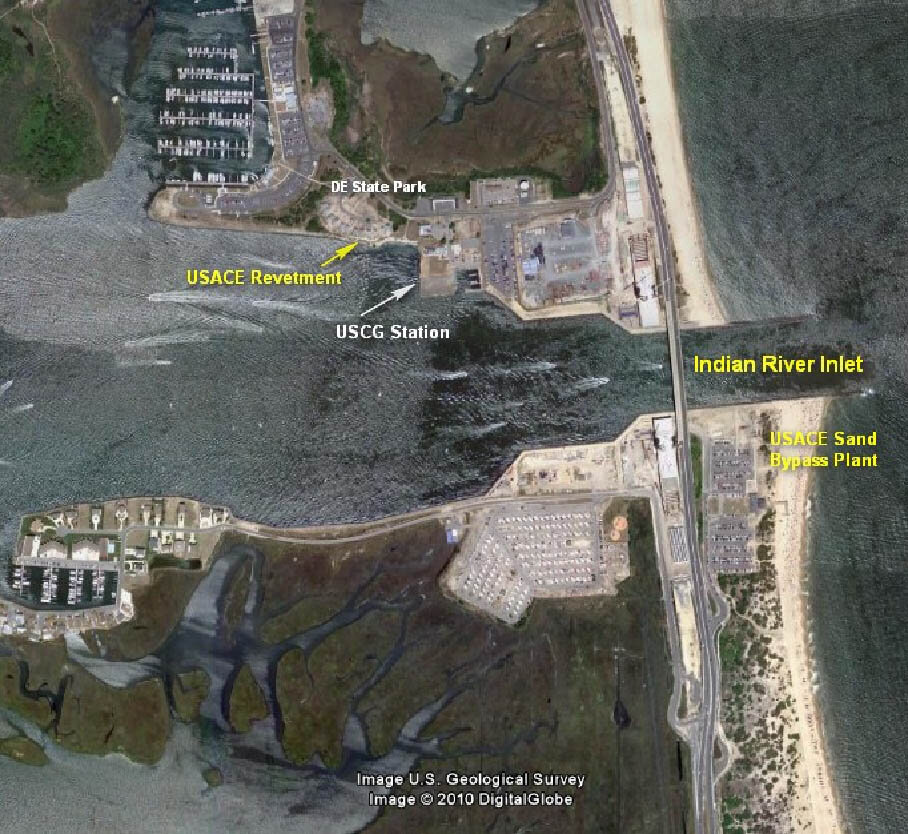Yearlong rehab coming to Indian River Inlet, Seashore State Park
Entrances, exits, parking to be affected
Even with less parking and shifting entrance and exit points for the next year or so, representatives from federal and state agencies agree that the repairs on the Indian River Inlet and Bay, starting later this month, will be worth it.

You must be a member to read this story.
Join our family of readers for as little as $5 per month and support local, unbiased journalism.
Already a member? Log in to continue. Otherwise, follow the link below to join.
Please log in to continue |
Yearlong rehab coming to Indian River Inlet, Seashore State Park
Entrances, exits, parking to be affected
DEWEY BEACH — Even with less parking and shifting entrance and exit points for the next year or so, representatives from federal and state agencies agree that the repairs on the Indian River Inlet and Bay, starting later this month, will be worth it.
An information session Friday in Dewey Beach gave a rough outline of what to expect during the project.
“The Indian River system is very complex and has developed several deep — 100 feet deep in places — ‘scour’ holes,” said Monica Chasten, project manager with the U.S. Army Corps of Engineers.
These holes have started to affect the surrounding navigational jetties and park amenities, resulting in phenomena like “standing waves,” which, she said, have affected the Coast Guard’s ability to navigate the inlet on occasion.
On land, walkways have started to crumble and a bulkhead has failed, which led to the rebuild’s inclusion in the federal Bipartisan Infrastructure Law of 2021.
The inlet and bay area, Ms. Chasten noted, have undergone human-made changes during the last century and natural processes for a lot longer.
The law’s funding covers the scour holes, damaged bulkhead and sand tightening of the affected locations but not another problem area — the north jetty. Ms. Chasten agreed that the jetty is being starved of sand replenishment due to a variety of factors but said the work there would require another contract.
Geotechnical and structural analyses of that spot, already underway, continue, according to the corps.
There is no set completion date for the inlet upgrade, but the officials gathered Friday generally concurred that it should take a year to finish. Ms. Chasten, however, did note a prohibition on working in the site’s water during March and April.
Regarding the decrease in parking, the project’s organizers said the needed heavy equipment, already being staged, will require one-quarter to one-third of the spots in Delaware Seashore State Park’s lot, or about 60 spaces.
Also, the parking lot near the Coast Guard Station, also known as Bubblegum Beach, is expected to host machinery.
Meantime, entrances and exits to the park, along with some fee booths, are expected to shift during construction and according to the needs of the work, said Scott Borino, its superintendent.
“What we’d really like to stress is for people to stay out of the restricted areas like the navigational jetties. They’re not for recreational purposes, and you can get hurt, which is a problem for you and the state park,” Ms. Chasten said.
The goals of the project are to provide a safe navigation channel for commercial, recreational and U.S. Coast Guard use. Also, Indian River Inlet is the only water access point into the Delaware inland bay area, which includes the Indian River Bay and the Rehoboth Bay, according to the fact sheet provided to Congress as it was considering this construction.


 By
By 



